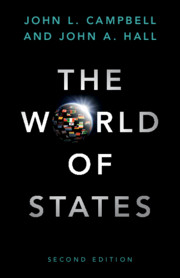Book contents
- The World of States
- The World of States
- Copyright page
- Contents
- Tables
- Preface to the First Edition
- Preface to the Revised, Second Edition
- Introduction
- 1 The Past
- 2 Conditions of Existence, Old and New
- 3 Challengers?
- 4 States of the Global South
- 5 The North
- 6 Still the Strongest Power on Earth?
- Conclusion
- References
- Index
Introduction
Published online by Cambridge University Press: 28 May 2021
- The World of States
- The World of States
- Copyright page
- Contents
- Tables
- Preface to the First Edition
- Preface to the Revised, Second Edition
- Introduction
- 1 The Past
- 2 Conditions of Existence, Old and New
- 3 Challengers?
- 4 States of the Global South
- 5 The North
- 6 Still the Strongest Power on Earth?
- Conclusion
- References
- Index
Summary
We live in a world of states – or, if you will, the world in which we live cannot be understood without appreciation of the institutional characters of different types of state and of the nature of the interactions between them. It can be said immediately that this denies outright the claim often made, by politicians as well as by academics, that states are losing their powers as economic interactions around the world increase in speed and intensity. One reason undermining that claim concerns economic and political development, still most successful when led by states determined to catch up with the leading edge of power and prosperity. A second reason concerns the advanced core of capitalist society: this is plural rather than singular, run on distinctive lines by differing national political economies. Then there is the European Union (EU). This is not a transnational state but rather an arena in which states meet, regularly and with high levels of civility, so as to iron out differences between them. Finally, much attention will be given in this book to the country that fears to use the very concept.
- Type
- Chapter
- Information
- The World of States , pp. 1 - 15Publisher: Cambridge University PressPrint publication year: 2021



